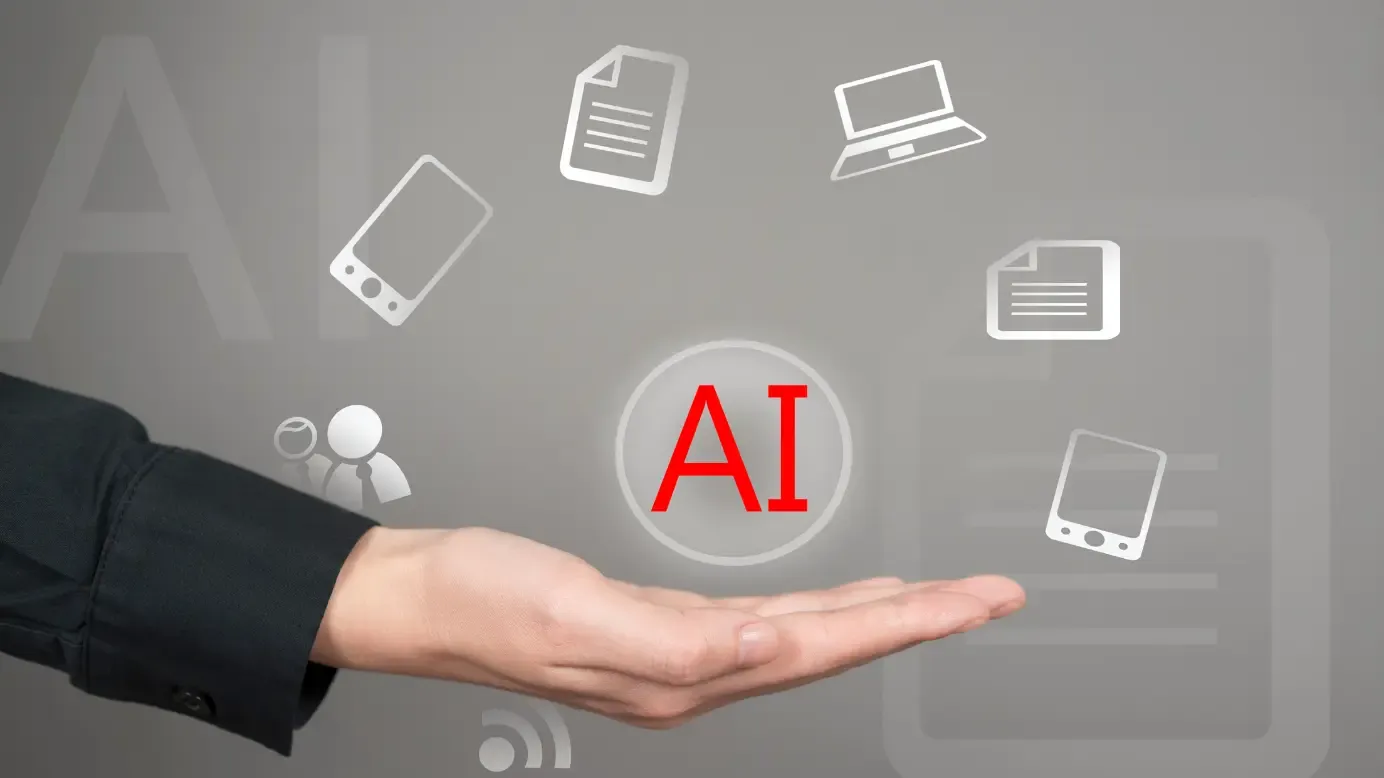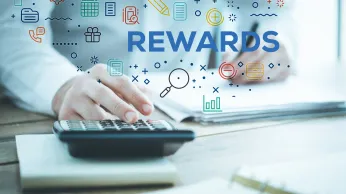AI in HR: Benefits, Tools & Future Trends for HR Professionals To Look For
Artificial intelligence in human resources (HR) is transforming the way companies manage recruitment, engagement, and performance. With AI tools for HR becoming more advanced, businesses are streamlining processes and boosting employee satisfaction.
En esta página
- What is Artificial Intelligence in HR?
- Ventajas de la IA para mejorar la experiencia de los empleados
- How is AI used in human resources?
- Top AI Tools for Human Resources in 2025
- Casos prácticos reales y ejemplos de IA en RRHH
- Challenges and ethical considerations when leveraging artificial intelligence in HR
- How Empuls supports AI-powered employee management (EM)
- Future of AI in HR: Trends and predictions
- Conclusión
- Preguntas frecuentes
Se ha predicho que la IA (Inteligencia Artificial) transformará casi todas las industrias, incluida la de Recursos Humanos. Algunas grandes empresas, como los equipos de RRHH y adquisición de talento de Google e IBM, han empezado a utilizar la IA en sus flujos de trabajo diarios para mejorar la eficiencia y la productividad y mantenerse a la vanguardia del panorama digital en constante evolución.
It has been reported that 76% of HR leaders believe that if they don't adopt HR practices in the next 1-2 years, they will not be as successful as the companies that have already incorporated AI technology.
Employees are the backbone of every company, and AI plays a huge role in enhancing the employee experience. AI has already been used in various aspects of employee management by supporting employees in learning and development and creating personalized upskilling programs based on their unique needs and preferences.
Las herramientas de IA también pueden ayudar al bienestar de los empleados, ya que ofrecen información valiosa sobre la carga de trabajo y el bienestar general de los empleados.
La IA tiene un impacto significativo en los RRHH y puede ayudar a remodelar muchos aspectos del sector. La incorporación de la IA a las prácticas de RRHH tiene varias ventajas tanto para las empresas como para los empleados.
A medida que la inteligencia artificial se integra en los RRHH, las partes interesadas esperan que se utilice de forma eficiente. Muchos sectores están adoptando la IA para trabajar de forma más rápida y eficiente, por lo que las empresas deben adaptarse y mantenerse por delante de la competencia.
What is Artificial Intelligence in HR?
AI in HR refers to implementing Machine Learning (ML), Natural Language Processing (NLP), and other AI technologies to automate human resources tasks and aid decision-making.
It allows for a data-based approach to talent acquisition, employee advancement, and retention that aims to reduce biases and enhance job seekers' and employees' experiences.
AI tools can assist HR teams in diverse areas, including employee records management, payroll processing, recruitment, onboarding, and performance management.
Until recently, human resources was viewed as a purely administrative department. HR analytics (which sprung up ever since the rise of the digital era) introduced a more evidence-based approach to managing people, including a data-driven model instead of intuition-based decision-making.
El modelo basado en datos incluía la recopilación y el análisis de datos de RRHH, como los índices de rotación de empleados, absentismo y demografía de la plantilla, para comprender patrones y ayudar a la toma de decisiones esenciales en materia de recursos humanos.
However, with the gradual passing of time and the introduction of advanced data analytics and AI tools, the role of HR has evolved. HR departments today use data more strategically to make better decisions, predict future trends, and contribute to organizational performance and growth.
Because of this, organizations now acknowledge HR as an effective strategic partner that can help shape business strategy and gain a competitive edge.
Interestingly, 81% of HR leaders are exploring AI to improve organizational efficiency, and 93% use AI tools to reduce organizational costs. One of the top barriers for 37% of HR Managers implementing AI is the lack of integration into the existing systems.
While traditional AI applications have streamlined HR tasks, generative AI is revolutionizing the field by enabling the creation of new content and insights. According to McKinsey, generative AI offers significant value in HR through:
- Content creation: Automating the development of job postings and personalized candidate communications.
- Data summarization: Extracting insights from unstructured data to enhance performance management.
- Employee engagement: Utilizing AI-driven chatbots to provide personalized learning recommendations.
- People analytics: Analyzing large datasets to predict attrition and inform workforce planning.
These are only few applications of AI that can lead to the substantial efficiency gains and more informed decision-making in HR functions.
Ventajas de la IA para mejorar la experiencia de los empleados
Son varios los beneficios que los equipos de RRHH pueden obtener del uso de la IA para mejorar la experiencia de los empleados. Algunos de los beneficios significativos incluyen:
1. Racionalización de los procesos de contratación
AI algorithms can effectively analyze vast candidate data, enhancing the recruitment process's speed and accuracy. AI can also provide more objective candidate evaluation, which can help reduce unconscious biases and ensure a fair selection process. It removes human error and subjective decision-making, which fosters fairer hiring practices.
La IA también tiene el potencial de evaluar los comportamientos del candidato en el lugar de trabajo mediante técnicas de análisis avanzadas, lo que puede ayudar a identificar la mejor opción para la organización. La IA también puede ayudar a prever las necesidades futuras de mano de obra analizando la estrategia organizativa, las tendencias del mercado y los datos de rendimiento.
2. Mejorar la incorporación
AI can help automate the daily onboarding tasks and allows HR teams to focus on the strategic side of things. AI can also help create a personalized onboarding experience, as it will be tailored to each employee's individual needs, enhancing their initial engagement and allowing them to integrate seamlessly into the company's culture. By quickly setting up your accounts and offering personalized training programs, AI-driven systems help speed up the recruitment and onboarding process.
3. Mejorar el compromiso de los empleados
Las herramientas de IA pueden realizar un seguimiento continuo de los objetivos y el rendimiento de los empleados y proporcionarles información inmediata. Al establecer objetivos claros y cuantificables, la IA también favorece las evaluaciones imparciales del rendimiento.
AI can also analyze performance data to help predict future performance trends, which supports successful planning and talent management. AI-automated performance management can also lead to enhanced productivity and better results.
4. Strategic workforce planning enhanced by AI
AI facilitates strategic workforce planning by analyzing current workforce capabilities and predicting future talent needs. Through data-driven insights, HR can identify skill gaps, forecast turnover rates, and develop targeted recruitment strategies.
For instance, AI can assess the impact of emerging technologies on job roles, enabling proactive reskilling programs. This strategic approach ensures that organizations remain agile and prepared for future workforce challenges.
How is AI used in human resources?
Artificial Intelligence (AI) is transforming human resources by automating repetitive tasks, improving decision-making, and enhancing employee experiences. HR departments are leveraging AI to streamline their operations and create more personalized, efficient, and data-driven processes.
From recruitment to employee retention, AI is helping HR professionals focus on strategic initiatives that drive business growth. Here are some common applications of AI in human resources:
- Recruitment and talent acquisition: AI automates resume screening, candidate ranking, and job matching using algorithms and predictive analytics.
- Employee engagement and support: Chatbots and virtual assistants provide real-time assistance and support, improving employee satisfaction and productivity.
- Onboarding and training: AI tools generate personalized onboarding experiences and recommend learning paths tailored to individual roles and goals.
- Performance management: AI analyzes performance data to offer objective feedback and identify high-potential employees for succession planning.
- Workforce planning: Predictive analytics help HR teams forecast hiring needs, detect flight risks, and optimize workforce strategies.
- Diversity and inclusion: Natural language processing (NLP) detects biases in job descriptions and promotes inclusive language to attract diverse candidates.
- Policy and content creation: Generative AI tools help create consistent, data-backed HR documents, such as job descriptions, training manuals, and performance summaries.
With these applications, AI is reshaping the future of work by empowering HR teams to be more agile, proactive, and employee-centric.
Top AI Tools for Human Resources in 2025
Las herramientas y tecnologías de IA se incorporan ahora a las prácticas de RRHH para mejorar la eficiencia, el compromiso de los empleados y los resultados empresariales deseables. Algunas herramientas y tecnologías de IA esenciales incluidas en RRHH incluyen:
1. Chatbots y asistentes virtuales
AI chatbots are virtual assistants that use artificial intelligence to support and assist employees. These chatbots can answer frequently asked questions, provide insights about the company's policies, and assist with basic HR tasks and inquiries. AI chatbots can help streamline employee support processes, lessen response times, and enhance employee satisfaction.
Los asistentes virtuales basados en IA pueden ayudar a los departamentos de RRHH en varias tareas, como hacer que su trabajo sea más eficiente y eficaz. También pueden ayudar a automatizar tareas repetitivas de RRHH como la incorporación, las bajas y la administración de beneficios.
They can also offer personalized recommendations to employees regarding career development, performance management, and other training opportunities. Virtual assistants can also allow HR specialists to focus on more strategic tasks and enhance employee engagement.
2. Predictive analytics
Las soluciones de análisis predictivo utilizan algoritmos de IA para examinar los datos de los empleados y observar a las personas con mayor potencial de éxito en sus funciones. Estos métodos también pueden predecir el éxito futuro teniendo en cuenta variables previas de rendimiento y trayectoria profesional.
By identifying high-potential candidates, companies can focus their development efforts and offer progress in the company. Predictive analytics can aid succession planning by identifying prospective talent within the organization.
Aprovechar el análisis predictivo puede conducir a una mejor planificación de la mano de obra. La IA puede identificar patrones y tendencias mediante el análisis de una gran cantidad de datos, lo que permite a las empresas tomar decisiones más inteligentes con respecto a la contratación y la planificación de la sucesión. El análisis predictivo también puede identificar posibles riesgos de fuga, lo que permite a los departamentos de RRHH desarrollar estrategias para ayudar a retener a los mejores talentos de manera eficaz.
3. Procesamiento del lenguaje natural (PLN)
HR professionals use NLP techniques to analyze employee and candidate data, emails, resumes, and feedback. NLP algorithms analyze unstructured text data to utilize valuable information, including sentiment analysis, personality traits, and competency.
Esto puede ayudar a los equipos de RR.HH. a tomar decisiones sobre contratación y retención del talento y a mejorar la motivación de los empleados. La PNL también puede automatizar procesos de RRHH como la selección de currículos, el análisis de las opiniones de los empleados y la clasificación de candidatos.
Los profesionales de RRHH pueden utilizar la PNL para escanear currículos y encontrar al candidato adecuado para el puesto. Los algoritmos de PNL extraen palabras y frases clave, las relacionan con la descripción del puesto y clasifican a los candidatos en función de sus cualificaciones.
El PLN también puede utilizarse para el análisis de sentimientos, que puede servir para identificar hasta qué punto los candidatos encajarán en la cultura de la empresa. Los algoritmos de PLN también pueden identificar sesgos en las ofertas de empleo y utilizar un lenguaje inclusivo para aumentar la diversidad en el conjunto de candidatos.
4. AI Centers of Excellence (CoE) in HR
Establishing an AI Center of Excellence (CoE) within HR departments serves as a centralized body to oversee AI initiatives. The CoE is responsible for setting best practices, ensuring compliance with ethical standards, and facilitating knowledge sharing across the organization.
By having a dedicated team focused on AI, HR can more effectively integrate AI tools for human resources, drive innovation, and maintain consistency in AI applications.
5. Generative AI (GenAI) in HR
Generative AI (GenAI) is revolutionizing HR by enabling the creation of content such as job descriptions, training materials, and policy documents. HR departments are leveraging GenAI to automate repetitive tasks, allowing professionals to focus on strategic initiatives.
For instance, GenAI can generate personalized onboarding materials tailored to individual roles, enhancing the new hire experience. Additionally, it aids in drafting performance review summaries by analyzing employee data, ensuring consistency and objectivity.
Casos prácticos reales y ejemplos de IA en RRHH
Repasemos algunos ejemplos reales de cómo algunas de las principales empresas del mundo han incorporado la IA a sus prácticas de RRHH y cómo esta estrategia les ha llevado al éxito.
1. Unilever's AI-powered recruitment
Unilever's HR department has replaced conventional hiring with digital interviews and AI-powered online assessments. This unique approach also expands the talent pool by enhancing diversity and inclusivity.
It also reduces unconscious biases, which ensures a fair and objective selection process. This has resulted in a more efficient hiring process that aligns with the demands and expectations of the modern talent pool.
2. El compromiso de los empleados de Hilton impulsado por la IA
Hilton has implemented AI-driven strategies to enhance employee engagement. These strategies aim to improve the employee experience, increase productivity, and reduce turnover rates. By implementing AI, Hilton saw an opportunity to enhance human connection and responsiveness in the application and interview process.
Los responsables de RRHH vieron el poder de la IA para reducir el tiempo necesario para cubrir vacantes, mejorar la experiencia de los candidatos y reducir la carga de trabajo administrativo de los reclutadores. Esto llevó a la creación de Ally, un chatbot para candidatos entrantes, que se encontraba en el sitio de empleo de Hilton.
Hilton también utilizó IA para entrevistas y evaluaciones en vídeo, lo que le reportó una puntuación neta de promotores de 85 y mejoró los índices de contratación para entrevistas. Con Ally, el puesto de trabajo al que optas se envía a tu teléfono con un enlace para completar tu solicitud de empleo en Hilton en menos de un minuto, lo cual es bastante impresionante.
3. La analítica Watson de IBM en RRHH
IBM Watson Orchestrate is an AI-powered tool that allows HR professionals to automate routine HR tasks, analyze data, and make better business decisions. It uses Natural Language Processing (NLP) to draw from prebuilt and custom skills to implement functions specific to human resources processes by integrating with applications that your HR department already relies on.
Los profesionales de AT pueden utilizar Orchestrate para automatizar tareas que consumen mucho tiempo, como la búsqueda de candidatos y la contratación, lo que les permite centrar su tiempo y energía en los aspectos más estratégicos de la contratación. Esto ha mejorado la productividad de los profesionales de RRHH, lo que se traduce en mejores contrataciones de candidatos excepcionales.
Orchestrate también ayuda a automatizar las tareas manuales de contratación, lo que ahorra al equipo de IBM un tiempo precioso para planificar iniciativas estratégicas y satisfacer las necesidades y requisitos del cliente. La incorporación requiere atención humana y mucho papeleo. Watson de IBM automatiza este proceso, que lleva mucho tiempo, e introduce sin problemas a los nuevos candidatos en la empresa.
Al delegar estas tareas en Orchestrate, los equipos de RR.HH. pueden centrarse en ofrecer un enfoque más centrado en las personas para la empresa y los empleados.
Challenges and ethical considerations when leveraging artificial intelligence in HR
Although there are many benefits that artificial intelligence offers to HR teams, there are still some challenges and ethical considerations that you need to be aware of when incorporating AI in HR practices. Some critical factors to consider include:
1. Privacidad y seguridad de los datos
Con la creciente necesidad y uso de la IA en las prácticas de RRHH, especialmente cuando se manejan datos sensibles de empleados y candidatos, ha aumentado la preocupación por la privacidad de los datos y la ciberseguridad. Las empresas deben mantener los datos de sus empleados de forma sensible y cuidadosa y cumplir con las normativas de protección de datos como GDPR y CCPA.
Aunque el uso de la IA en RRHH está ganando impulso, a muchos responsables de RRHH les preocupa su precisión. También les preocupa la garantía de que los datos sensibles ofrecidos por los empleados y candidatos no se utilicen para seguir entrenando el modelo de IA, comprometiendo en última instancia su privacidad y seguridad.
HR departments need to implement robust cybersecurity measures, like investing in a Remote access VPN, using reliable antivirus software, and using multi-factor authentication to maintain trust, protect employees' confidential information, and ensure they're protected from potential data breaches.
2. Prejuicios e imparcialidad en la IA
One of the most significant drawbacks of using AI is the bias during the hiring process. The US Equal Opportunity Employment Commission announced in May last year that employers using AI tools can be liable for discriminatory hiring practices. HR leaders need to ask specific questions during the software purchasing process and ensure they are aware of any potential biases.
Los algoritmos de IA pueden perpetuar sesgos sociales en los datos con los que se entrenan. Ten cuidado con los posibles resultados discriminatorios basados en el género, la raza, la edad y otras características sensibles.
Si los datos utilizados para entrenar los modelos de IA tienen sesgos, estos sesgos pueden perpetuarse en el proceso de toma de decisiones. Esto puede conducir a prácticas de contratación discriminatorias y a la desigualdad de oportunidades para empleados de diversos orígenes.
3. Soluciones únicas
Los sistemas de RRHH basados en IA pueden ofrecer soluciones estándar para los problemas más comunes del departamento de RRHH. Aunque esto puede ayudar a mejorar la eficiencia, también conduce a una falta de apoyo individualizado para las necesidades y requisitos personales del empleado.
Cada empleado aporta sus propias fortalezas, debilidades y experiencias al lugar de trabajo. Solo confiar en la IA para gestionar el rendimiento y el desarrollo de los empleados puede impedir el toque humano y la conexión necesarios para comprender y nutrir a los mejores talentos.
4. Emphasis on human-centered AI approaches
Adopting a human-centered approach to AI in HR ensures that technology serves to augment human decision-making rather than replace it. This involves designing AI systems that are transparent, explainable, and aligned with human values.
For example, AI-driven recruitment tools should provide insights into their decision-making processes, allowing HR professionals to understand and trust the outcomes. By focusing on human-centered AI, organizations can foster greater acceptance and effective utilization of AI tools for human resources.
5. Navigating AI-induced workforce disruptions
The introduction of AI in HR processes may lead to workforce disruptions, including changes in job roles and required skill sets.
Organizations must proactively manage these transitions by communicating changes, providing reskilling opportunities, and involving employees in the transformation process. By addressing potential disruptions head-on, companies can mitigate resistance and foster a culture of adaptability.
How Empuls supports AI-powered employee management (EM)
As HR teams increasingly turn to artificial intelligence for smarter and faster decision-making, Empuls stands out as a powerful platform that bridges AI with employee management (EM) to create more engaged, productive, and satisfied workforces. Empuls doesn’t just streamline processes—it enhances the entire employee lifecycle, making it a valuable addition to any HR tech stack embracing AI.
1. Automating employee engagement with intelligent nudges

Empuls uses AI-powered nudges and personalized notifications to drive participation in engagement programs. Whether it’s pulse surveys, recognition events, or wellness challenges, the platform ensures that employees stay informed and motivated through timely reminders. This automation reduces manual follow-ups and ensures consistent engagement across teams.
2. Using analytics to improve employee experience

Empuls provides real-time dashboards and sentiment analysis based on employee feedback, surveys, and interactions. With built-in analytics, HR leaders can identify patterns in engagement, burnout risk, and recognition trends. These insights empower organizations to make data-driven decisions to retain top talent and elevate morale.
3. Enabling continuous recognition and rewards

Recognition is a key pillar of employee management, and Empuls automates this with AI-driven suggestions and reward triggers. For example, if an employee reaches a milestone or consistently exceeds performance goals, Empuls can automatically prompt managers to recognize and reward them through digital badges, gift cards, or custom awards.
This fosters a culture of continuous appreciation, boosts motivation, and aligns with the broader AI-driven approach to HR.
4. Personalizing employee communication at scale

AI in HR thrives on personalization, and Empuls leverages this by delivering tailored internal communications to employees based on their behavior, location, and preferences. Whether it's onboarding information, learning modules, or wellness updates, the right message is delivered to the right person at the right time—without HR teams needing to micromanage every message.
This enhances the employee communication experience, a critical component of AI-led EM strategies.
5. Supporting strategic HR planning with feedback insights

With Empuls, HR teams can conduct pulse surveys, lifecycle feedback, and eNPS measurements with ease. The platform uses AI to categorize and summarize open-ended responses, helping HR teams quickly interpret employee sentiment and act on it. This feedback loop is essential for shaping talent strategies and planning workforce interventions proactively.
Whether you're aiming to reduce attrition, drive engagement, or improve your employer brand, Empuls offers the AI-enabled infrastructure to support your goals and stay ahead of the competition. Schedule a call now to learn more!
Future of AI in HR: Trends and predictions
El futuro de los RRHH y su progreso están estrechamente ligados a la inteligencia artificial. La IA ayudará a transformar las prácticas de RRHH, permitiendo que la contratación, la adquisición de talento y la gestión de los empleados sean más eficientes. Los profesionales de RRHH pueden ahora experimentar procesos racionalizados y centrarse en resultados basados en datos.
The integration of AI in HR has led to the creation of specialized roles aimed at managing and optimizing AI tools for human resources. Positions such as HR AI Product Managers and AI Ethics Officers are becoming increasingly common.
These roles are responsible for overseeing the deployment of AI solutions, ensuring ethical considerations are addressed, and aligning AI initiatives with organizational goals. By having dedicated professionals in these positions, companies can better navigate the complexities of AI implementation in HR.
Gartner reports that by 2025, "60% of enterprise organizations will adopt a responsible AI framework for their HR technology, and in turn, achieve a greater employee experience and trust in the organization."
Sin embargo, es esencial señalar que la IA no sustituirá la necesidad de profesionales de RRHH. La perspectiva y la experiencia humanas desempeñan un papel crucial en los recursos humanos, permitiendo a las empresas prosperar y crecer. Por eso las empresas deben encontrar el equilibrio adecuado entre la tecnología y la interacción humana para cosechar los beneficios.
Conclusión
Las herramientas y soluciones de IA pueden mejorar la experiencia de los empleados y aumentar su retención. Los empleados pueden descargar sus tareas administrativas repetitivas, agilizar los flujos de trabajo y adquirir nuevas habilidades tecnológicas.
El uso de la IA para mejorar la experiencia de los empleados contribuye a su bienestar y también ayuda a la organización a labrarse una buena reputación. Las herramientas de IA pueden crear programas de formación personalizados y automatizar tareas manuales y repetitivas, lo que permite un flujo de trabajo fluido, motivación de los empleados y productividad.
Preguntas frecuentes
1. What is the role of AI in HR?
AI in HR streamlines and enhances tasks like recruitment, onboarding, performance management, and workforce planning. It helps automate repetitive processes, improve decision-making with data insights, reduce biases, and personalize employee experiences.
2. Can HR be replaced by AI?
No, AI cannot fully replace HR. While it automates tasks and boosts efficiency, the human touch in areas like employee relations, ethical decision-making, and organizational culture is irreplaceable. AI supports HR, but doesn’t eliminate the need for human professionals.
3. What companies use AI in HR?
Top companies using AI in HR include Unilever, Hilton, IBM, and Google. These companies leverage AI for recruiting, engagement, onboarding, and analytics, improving both operational efficiency and employee experience.
4. How much is AI used in HR?
AI usage in HR is rapidly increasing—81% of HR leaders are exploring AI to improve efficiency, and 93% use it to reduce costs. Its adoption spans various functions, with growing reliance on tools like chatbots, predictive analytics, and generative AI.













